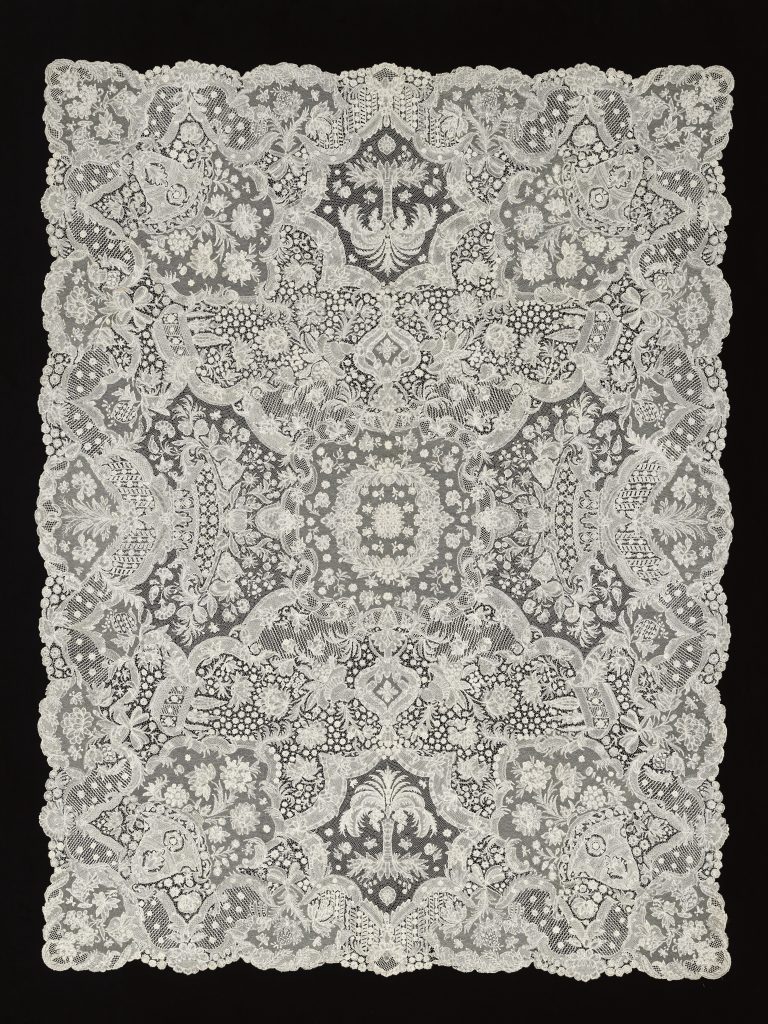This lace coverlet was given to MoMu by the King Baudouin Foundation as a long-term loan. The 200x150cm coverlet ranks among the outstanding achievements of Belgian bobbin lace makers. It was made around 1750, and probably commissioned for a European royal family. It would have been used on special occasions, like weddings or births. The custom for a mother to receive visitors in her bedroom shortly after giving birth was widespread throughout Europe. The most luxurious textiles one could buy would enhance the festive nature of this occasion.
Contrary to other textile techniques like weaving and embroidery, which are thousands of years old, bobbin lace only emerged around 1550 as a development of earlier braiding techniques. Initially, threads wound on bobbins were interlaced into simple geometric designs. Bobbin lace seems to have been invented in several European countries at roughly the same time. International trade and printed pattern books published in Italy, Spain, Switzerland, and France promoted its fast acceptance as a fashion accessory.
The coverlet consists of detailed composition involving floral compositions and even human figures that testifies the fast evolution of lace techniques. In order to study the coverlet thoroughly, Google made an ultra-high-resolution scan of the coverlet allowing the viewer to see every detail.
